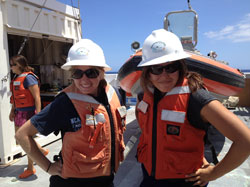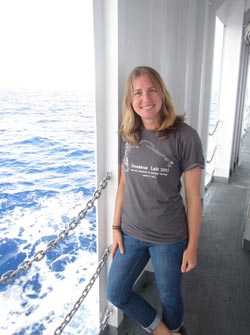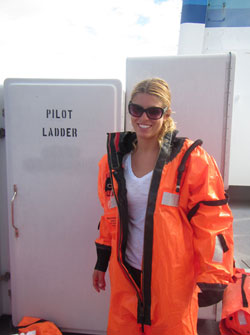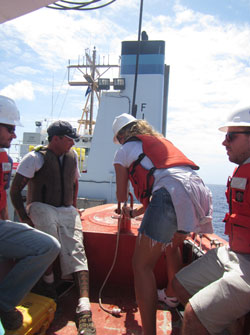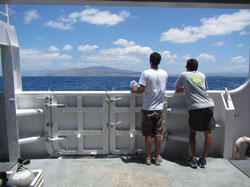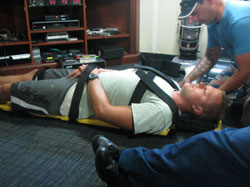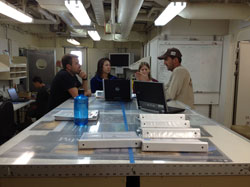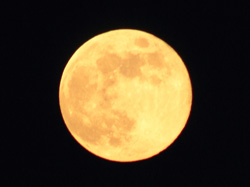
Reef Assessment and Monitoring Program Expediton Log – August 2, 2012
Safety First – Gearing Up and Getting Ready!
By: Megan Onuma & Carlie Wiener, COSEE Island Earth
As the 2012 Reef Assessment and Monitoring Program (RAMP) continues on its voyage to the Papahānaumokuākea Marine National Monument (PMNM), researchers aboard the Hiʻialakai have been going through extensive safety and boat briefings. In anticipation of arriving at French Frigate Shoals hours of planning, preparing equipment, and continuing to practice dive and safety drills help to ensure that operations run smoothly while out in the field. The coxswains, or small boat captains, worked with scientists to demonstrate several dive emergency rescue techniques including how to use a backboard, AED kit, administer oxygen, and walked through daily operators of how the smaller research vessels are deployed from the side of the ship. Practice drills such as abandon ship and man over board were also rehearsed. Knowing how to put on a survival or dry suit is important to practice, as it is no easy feat, especially on a moving ship.
Scott Godwin, the chief scientist for the 2012 RAMP cruise, is working hard to make sure all scientists and research plans are organized and ready to go. A wealth of experience, Scott has been lucky enough to have visited the Northwestern Hawaiian Islands for the past twelve years doing everything from coral reef monitoring, to diversity exploration, genetic work, and marine debris removal. Scott has even experience naming a new species of crab that he found in the Northwestern Hawaiian Islands "Sakaila wanawana". He ascribes his country upbringing to giving him an appreciation for all the natural elements surrounding the research cruise: ocean, stars, sunsets and sunrises; "it is really a mindset working out on ships … you do it because you enjoy it."
Nyssa Silbiger, PhD student at the Hawaiʻi Institute of Marine Biology at the University of Hawaiʻi spread her contagious enthusiasm for marine science as she talked about her research plan to put out coral blocks that will help her measure coral accretion (growth) and bioerosion (the break-down of coral by animals). Nyssa explained the importance of collecting baseline data, information obtained at the beginning of a project, so that later research can draw comparison and changes can be tracked over time. Nyssa attributes her love for marine science to a fifth grade field trip to a Marine Lab in Key Largo where she got to snorkel on coral reefs, "basically from there I knew that I had to work on the ocean."
Click here to go back to the Expedition Log.
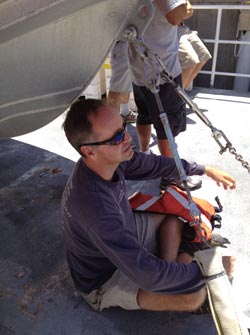
Chief Scientist Scott Godwin, finds reprieve from the hot sun during a safety briefing. Credit: Carlie Wiener
